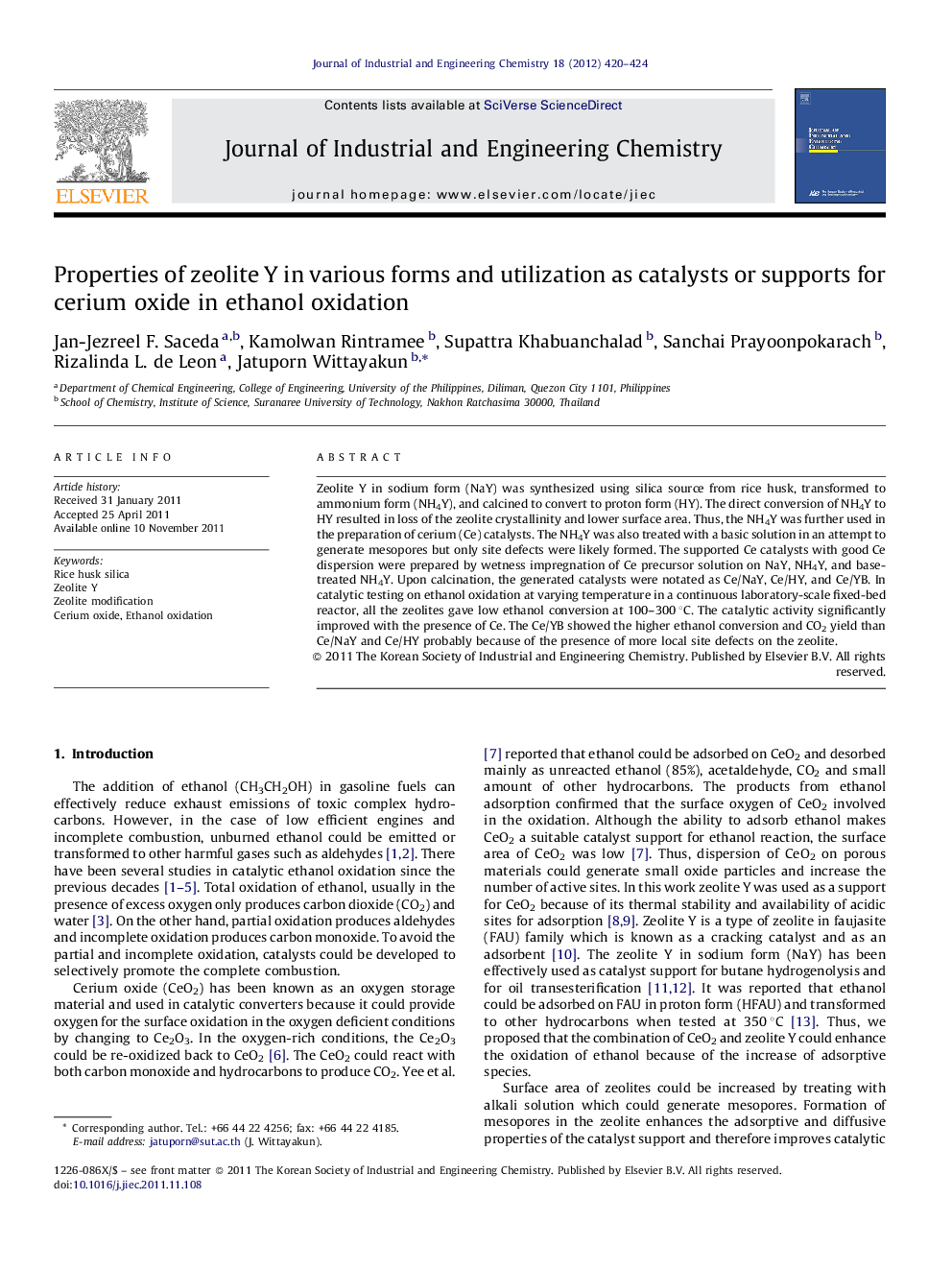| Article ID | Journal | Published Year | Pages | File Type |
|---|---|---|---|---|
| 228194 | Journal of Industrial and Engineering Chemistry | 2012 | 5 Pages |
Zeolite Y in sodium form (NaY) was synthesized using silica source from rice husk, transformed to ammonium form (NH4Y), and calcined to convert to proton form (HY). The direct conversion of NH4Y to HY resulted in loss of the zeolite crystallinity and lower surface area. Thus, the NH4Y was further used in the preparation of cerium (Ce) catalysts. The NH4Y was also treated with a basic solution in an attempt to generate mesopores but only site defects were likely formed. The supported Ce catalysts with good Ce dispersion were prepared by wetness impregnation of Ce precursor solution on NaY, NH4Y, and base-treated NH4Y. Upon calcination, the generated catalysts were notated as Ce/NaY, Ce/HY, and Ce/YB. In catalytic testing on ethanol oxidation at varying temperature in a continuous laboratory-scale fixed-bed reactor, all the zeolites gave low ethanol conversion at 100–300 °C. The catalytic activity significantly improved with the presence of Ce. The Ce/YB showed the higher ethanol conversion and CO2 yield than Ce/NaY and Ce/HY probably because of the presence of more local site defects on the zeolite.
